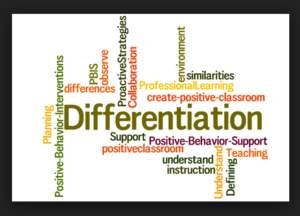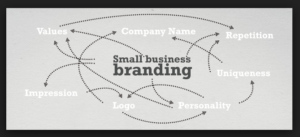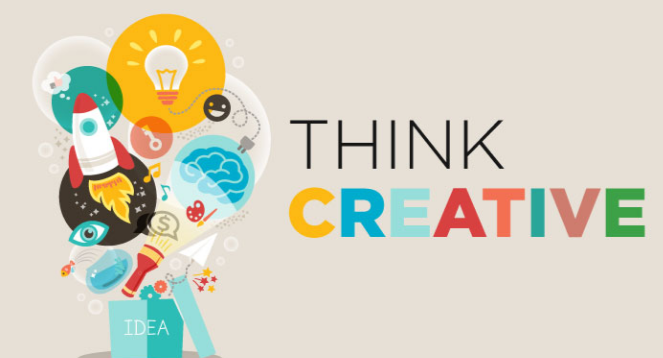Have you ever defined your favorite brands and questioned why? It is a key exercise we often use with our clients. It helps to evaluate what should be the heart of your company’s strong brand identity.
We believe the heart of all killer brands is the promise they commit to delivering to their clients. No matter how clever or memorable their brand marketing is if they fail to deliver on that promise, they fail. And those promises represent what the brand stands for and its strong brand identity.
Related: What the Lego Brand Teaches About Branding Your Business
Failure to deliver on your promise or be that strong brand identity is like a politician promising no new taxes. Mark my words. Those kinds of promises are a prescription for a brand marketing disaster.
Importance of a brand identity
We like to quote from the book Funky Business Forever when we discuss brands or branding with our clients:
The ‘surplus society’ has a surplus of similar companies, employing similar people, with similar educational backgrounds, coming up with similar ideas, and producing similar things, with similar prices and similar quality.
It is not easy being different, is it? But all the more important.
The key to a good brand is being different. There are 4 critical things to remember about brands and branding:
Every business has a brand, whether explicitly defined or not. The important question to be answered is how good is the brand.
Brands deliver an emotional connection to a business’s products and services. Most purchase decisions have critical emotional components.
Your brand represents a collection of your customers’ perceptions of how they see you, how they feel about you, and what they say about you.
Your brand communicates every time it touches a customer. This makes you, as a marketer, responsible for this communication ‘moment of truth’.
Most brands sell products or services. GM sells cars. Borders sell books. Real estate brokerages sell homes. A strong brand identity, however, satisfies a desire to get at the emotional heart of the matter. Let’s review 8 strong brand identities and what they promise … what they stand for. This is the best way to appreciate the importance of branding.
Differentiation
JetBlue’s brand success centers on the achievable – the simple things – they knew would make a difference for their guests. This set the stage for direct TV and XM radio, the provision of first-class seats to everyone, more legroom, great snacks, and high-end service at lower-end pricing. No other airline others these value propositions. They are different and their brand stands out because of those differences.
Simple. Attainable. Targeted. They delivered.
Solving customer problems
Best Buy’s marketing team, led by Drew Panayiotou, senior VP of marketing, worked to reframe the retailer’s brand proposition. Best Buy’s new tagline, representing its brand identity is ‘Making technology work for you’. A strong focus on solving its customers’ problems.
Giving back
Ben and Jerry’s have a progressive, nonpartisan social mission that seeks to meet human needs and eliminate injustices in local, national, and international communities. They do this by integrating these concerns into their day-to-day business activities. Their focus is on children and families, the environment, and sustainable agriculture on family farms.
Much has been made of corporate America’s propensity for internalizing the fruits of doing business while socializing the costs. Ben & Jerry’s, by contrast, is dedicated to what they call “linked prosperity”, which essentially recognizes the possibility that business can and should be a powerful force for the betterment of society.
Delivering Happiness
They don’t sell shoes. They deliver that extra dose of love we all need from time to time. There is no secret here. Zappos became Zappos because of the fanatical customer support it offered. That is the company’s brand. As Hsieh puts it, “Back in 2003, we thought of ourselves as a shoe company that offered great service. Today, we really think of the Zappos brand as about great service, and we just happen to sell shoes.”
Building trust
Look inside to find the best processor technology, the Intel tagline. The trust mark symbolizes customer trust and faith they are receiving the best in technology. Technology that is life-changing.
Product presentation
Lifestyle brands march to a different drummer. They have a clear and distinct point of view, are outspoken, and are inherently polarizing. For many brands, this polarizing effect is very risky, but for brands seeking to be disruptive in mature categories or sectors, it can be the path to huge success and bear great dividends. Whole Foods is a textbook case.
When brands have a clear, distinct point of view it forces choices that may forfeit short-term gain for long-term benefit. It is a conscious decision to invest in the brand. The values of the brand permeate the behavior of the organization, the customer experience, and, ultimately, public opinion. The result is a very powerful appeal to a much smaller audience.
Customer experience
Customer experience brings us a space rather than a product. Some would say that it fills a psychological need that other companies have not had to do in quite the same way. The emotion is all about uplifting moments and daily rituals. Something definitely worth remembering.
Customer immersion
Disney is all about magical, fantasy entertainment. Being bringers of joy, be affirmers of the good in each of us, be — in subtle ways — teachers. To speak, as Walt once put it, “not to children but to the child in each of us.”
They do this through great storytelling, by giving their guests a few hours in another world where their cares can be momentarily put aside, by creating memories that will remain with them forever.
So is this what killer branding is all about for companies?
We think so.
Making promises and keeping them.
Some organizations work very hard to weasel in the promises they make. They imply great customer service or amazing results or spectacular quality but don’t deliver. No, they didn’t actually lie, but they come awfully close. The result: angry customers and negative word of mouth.
It’s very easy to overpromise. Tempting to shade the truth a little bit, deliver a little bit less to save a few bucks. Who will notice?
The customers notice. If you need to overpromise to make the sale, don’t bother. It’s not worth it.
The best way to generate a strong brand identity is simple: know the key requirements and over-deliver.








